Non-chemical Termite Control Dunsborough & the South West
Termites cause damage for approximately 130,000 to 180,000 homes every year that insurance will not cover. Termite colonies will not stop on their own; if they enter your house they will keep on multiplying. You must have the option to take measures. At Bug Pest Control, your option for superior protection against termites is available. We have a team of termite technicians who can find termite-infested areas on your property and find appropriate solutions to get rid of the issue. Bug Pest Control is available 24/7 to answer your queries related to Termite Control, and we work fast to protect you and your property against destructive termites.
Termite Identification
Correct identification of termites ensures the use of the most effective control methods and the most appropriate prevention steps.
Coptotermes Termites
This species is considered Australia’s most destructive widespread termite.
Coptotermes Lacteus (C. lacteus) is also known as ‘The Milk Termite’, ‘Mound-Building Termite’, or ‘Subterranean Termite’, is a species of Rhinotermitidae. Rhinotermitide is a family of termites that feed on wood, with the potential to cause significant damage to wooden structures.
Coptotermes Frenchi is also known as The Australian subterranean termite, is a species of termite in the same family. Rhinotermitidae is present in the coastal area of Queensland and New South Wales, Australian Capital Territory, Victoria, South Australia, and Western Australia.
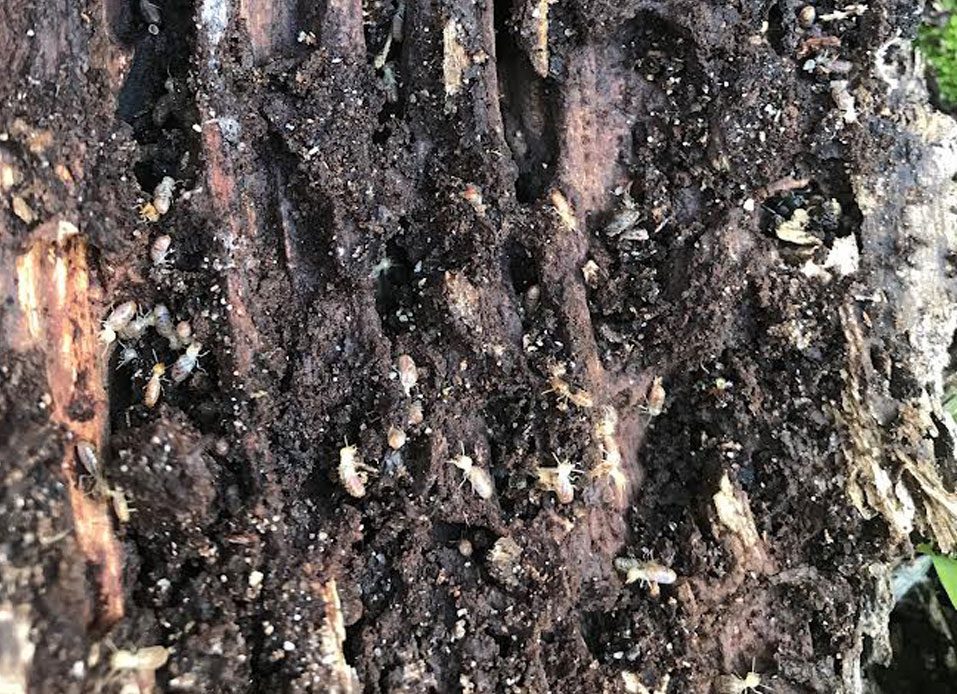
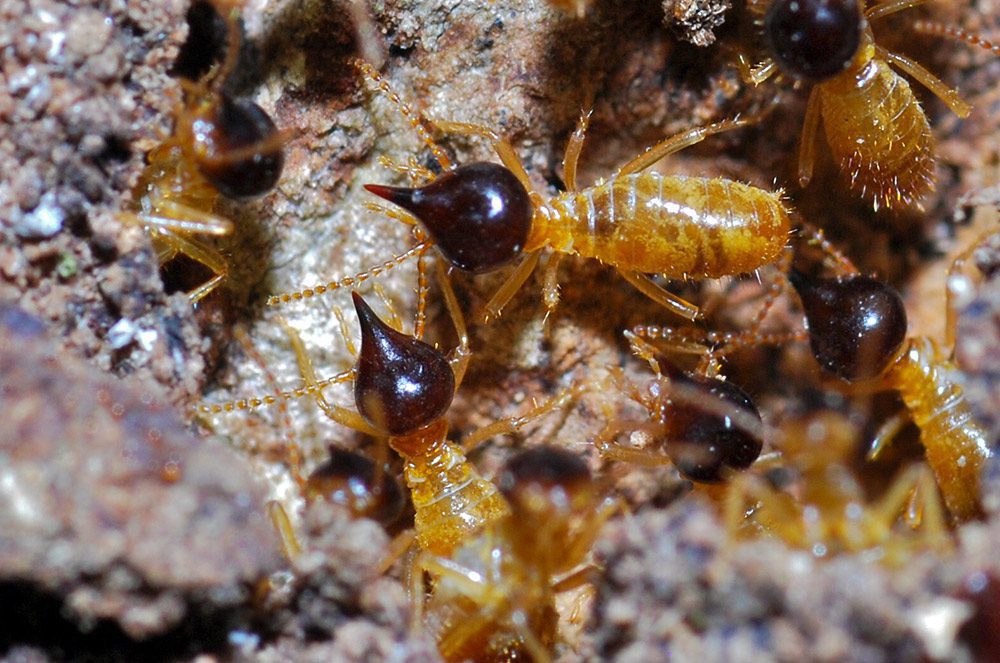
Nasutitermes Termites
There are three species of Nasutitermes and are easily recognised by the snout (nasute) of the soldiers. The colonies can get very large and can cause significant damage if undetected for a long period of time. The Nasutitermes species of termites are very common in the tree-filled areas of the hills district and can cause severe damage to timber if undetected for a long period of time. Mudding/leads caused by this termite are usually very dark to jet black in colour no matter what the soil type.
Heterotermes Termites
Heterotermes are usually found in tree stumps or bases of posts, but are not just limited to timber. They are sometimes known to share colony nests with Coptotermes and Schedorhinotermes. This species has numerous queens and is consequently difficult to control. They do not build mounds and are often found in connection with other species.
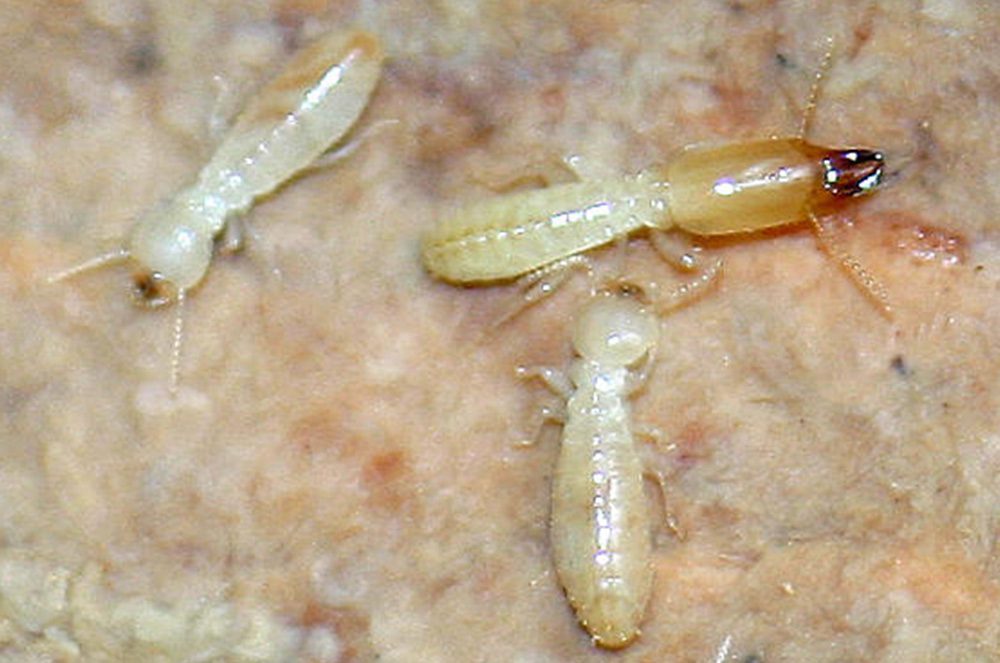
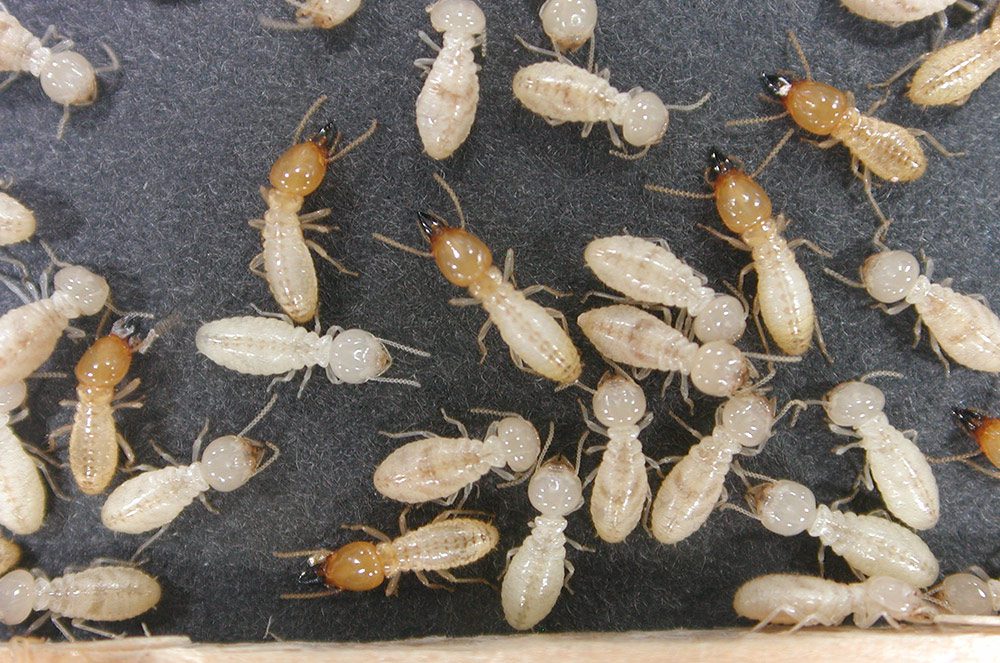
Coptotermes Acinaciformis
This species is the most widespread termite pest in Australia. Their nests can be found in the main trunk of a tree and also in the root crown. When located in the trunk of a tree, the nest can reach up to three metres in height. They are also found under patios and in the walls of a house. The soldier caste produces a milky defensive fluid from an opening (fontanelle) at the front of the head.
Schedorhinotermes Termites
Schedorhinotermes are highly destructive, building nests under man-made structures, and are regarded as second to the coptotermes in terms of economic damage. Schedorhinotermes species of termites are very shy and if you disturb them, they will move to another location of the building and start attacking the wood, making them very hard to treat. This species has two types of soldier: Major and Minor. They are very similar in appearance with only a few subtle differences. The major has a bulbous head, is approximately 5.0 –7.5 mm in length and have thick exoskeletons. The Minor has a narrower head with slender mandibles and is approximately 3.0-5.0 mm in length.
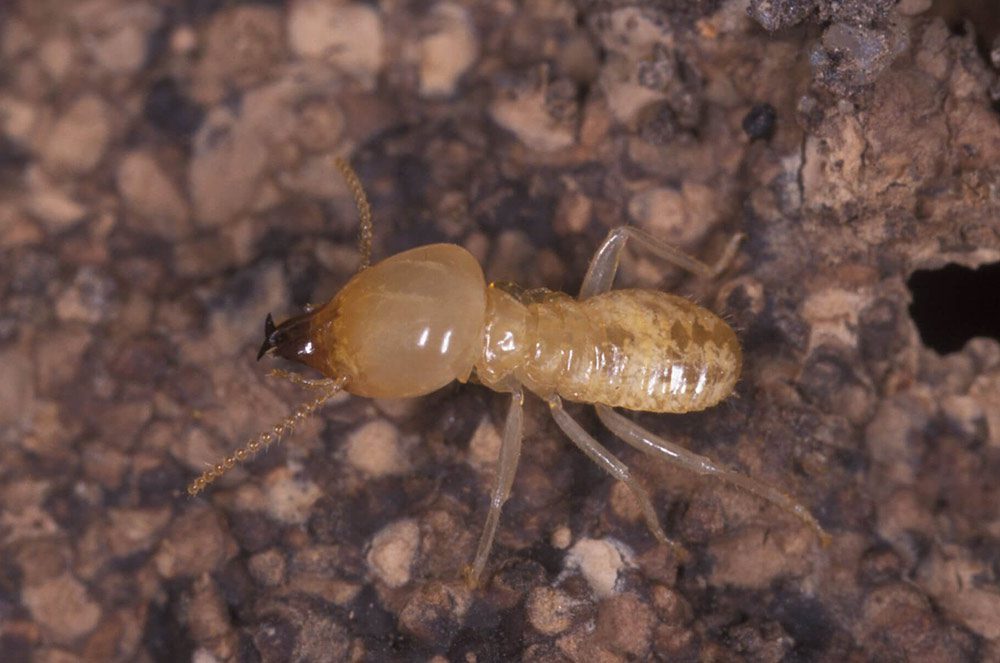
Termite Treatments Available
When using chemicals, we prefer Ensystex: the ‘first choice for environmentally responsible, effective, long-term pest management solutions’. We also offer other options for different budgets.
Drill & Inject Method
Drilling involves drilling holes into the Concrete surrounding the building and injecting termiticide into them. The number of holes to be drilled depends on the size of the built-up space. The choice of termiticide to be used will result in the effectiveness of the treatment. Drilling is often not completely effective, as soil movement and underground rainwater movement as time goes by, can weaken or dissolve the termiticide.
Trenching
A 150mm x 150mm trench is dug around the perimeter of your home, against the wall of the building. A chemical termiticide is applied to the trench at 10 litres per metre, the trench is backfilled and the termiticide is applied to the soil all at once.
Baiting (Exterra)
This method comprises of setting up Exterra inground bait stations around the buildings, by placing a researched specially selected piece of wood in the bait station along with an attractant, which the termites will be attracted to. The Exterra system is the original system of this sort. Requiem (bait) is placed in the bait station once there is evidence of an attack on the timbers, and is to be spread throughout the entire colony by the action of the Requiem, and is to eliminate the entire colony within 1-4 months.
The three methods listed above are the most common ways in which termite control is carried out on buildings and homes. All termite control methods used by pest control companies are any one of these. You either stop them from coming in, or you can treat the issue should they be uncovered to be invading your premises. “Exotic” methods of control such as genetic mod are not encouraged due to the risk that it poses to ecological integrity. These are costly and untested.
Termite Inspections via Thermal Imaging Technology
Hikmicro will pick up any change in temperature, when termites consume and digest the cellulose in the timber it generates a higher change in temperature and moisture, the M30 will give you a better chance in locating termite activity.
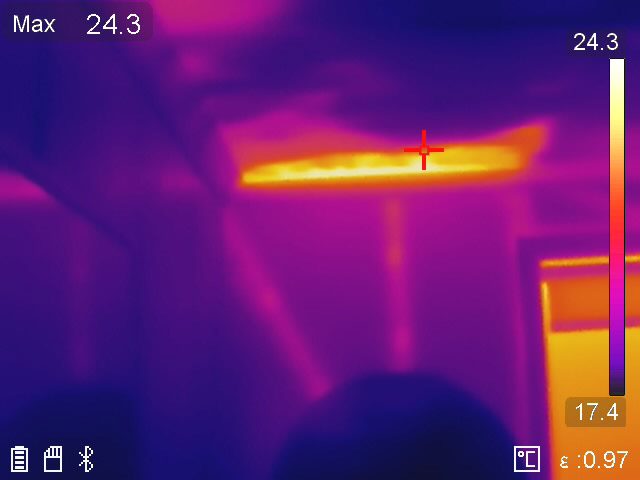
Wall framing and missing insulation

M30




